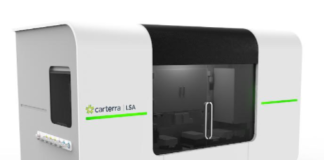Hand tracking, a groundbreaking technology that allows computers and devices to understand and interpret human hand movements, has emerged as a game-changer in the realm of human-computer interaction. With its ability to track and recognize the intricate motions of the human hand, this cutting-edge technology bridges the gap between the physical and digital worlds, opening up new possibilities for intuitive and immersive interactions. Hand tracking has found applications in a wide range of industries, from virtual reality and gaming to healthcare and robotics, promising to revolutionize the way we interact with technology and unlocking a host of exciting opportunities for the future.
At its core, hand tracking relies on advanced computer vision and machine learning algorithms to detect, track, and interpret the movements of the human hand in real-time. This technology allows computers and devices to understand the spatial positioning and orientation of the hand, recognizing gestures and actions performed by the user. Unlike traditional input methods such as keyboards and mice, hand tracking enables a more natural and intuitive interaction, as users can control and manipulate digital content using their hands as they would in the physical world.
The development of hand tracking technology has been driven by a combination of factors, including advancements in computer vision, machine learning, and sensor technology. In recent years, the proliferation of depth-sensing cameras, such as Microsoft’s Kinect and Intel’s RealSense, has played a crucial role in enabling accurate hand tracking. These cameras capture depth information, allowing the system to perceive the three-dimensional structure of the hand and its movements with remarkable precision.
Hand tracking has found numerous applications in the virtual reality (VR) and augmented reality (AR) industries, where it enhances the sense of immersion and realism for users. In VR, hand tracking eliminates the need for handheld controllers, freeing users to interact with the virtual environment using their natural hand movements. This creates a more intuitive and lifelike experience, empowering users to grab, manipulate, and interact with virtual objects as if they were physical entities. In AR, hand tracking enables seamless integration of digital content into the real world, facilitating virtual object manipulation and interaction with the environment.
Gaming is another domain that has been significantly impacted by hand tracking technology. The gaming industry has seen a surge in motion-based and gesture-controlled games, where players can engage in gameplay using their hands and body movements. Hand tracking technology has democratized gaming, making it more accessible and enjoyable for a broader audience, including casual gamers and those with physical disabilities. Furthermore, hand tracking has paved the way for innovative gaming experiences, blurring the lines between physical and digital play.
Beyond entertainment and gaming, hand tracking holds substantial promise for various professional fields. In the healthcare sector, it has been leveraged for medical training, patient rehabilitation, and virtual surgeries. Surgeons can practice intricate procedures in a risk-free virtual environment, enhancing their skills and expertise. Similarly, physical therapists can use hand tracking to monitor and guide patients’ movements during rehabilitation exercises, ensuring proper form and technique.
The integration of hand tracking with robotics has given rise to a new era of human-robot interaction. By equipping robots with the ability to perceive and understand hand gestures, humans can communicate and collaborate with machines in more natural and intuitive ways. This development has broad applications in industries such as manufacturing, logistics, and healthcare, where robots and humans can work together seamlessly.
In the automotive sector, hand tracking technology is making strides in enhancing the user experience and ensuring driver safety. Gesture control interfaces enable drivers to interact with infotainment systems and navigation controls without taking their hands off the steering wheel or eyes off the road. Additionally, hand tracking-based driver monitoring systems can track driver attention and fatigue, contributing to enhanced safety on the roads.
The accessibility benefits of hand tracking technology cannot be overstated. For individuals with physical disabilities or mobility impairments, traditional input devices like keyboards and mice can present significant challenges. Hand tracking offers an alternative, empowering these users to interact with computers and devices using intuitive hand movements. This inclusivity fosters greater participation and engagement in digital activities, enabling a more inclusive digital society.
The journey of hand tracking technology has been characterized by continuous advancements and ongoing research. As the technology matures, developers and researchers are exploring new frontiers, striving for even more accurate and robust hand tracking solutions. Challenges, such as occlusion handling, multi-user interactions, and fine-grained gesture recognition, are being addressed through sophisticated algorithms and improved hardware.
Ethical considerations surrounding hand tracking also warrant attention. The technology raises questions about privacy, as it involves the capture and processing of users’ hand movements and gestures. Ensuring user consent, data security, and responsible data handling practices are crucial in maintaining user trust and safeguarding their personal information.
In conclusion, hand tracking technology has revolutionized human-computer interaction, enabling intuitive and immersive interactions in the digital world. By interpreting human hand movements, this cutting-edge technology bridges the gap between physical and virtual environments, unlocking a host of applications in industries such as virtual reality, gaming, healthcare, robotics, and more. Hand tracking’s impact extends beyond entertainment and productivity, with accessibility benefits empowering individuals with disabilities to engage fully in the digital realm. As research and development continue to drive advancements in the field, the future of hand tracking promises even more seamless and natural interactions, reshaping the way we interact with technology and opening up new dimensions of human-machine collaboration.
Advanced Computer Vision:
Hand tracking relies on sophisticated computer vision algorithms to accurately detect and track the movements of the human hand in real-time.
Natural Interaction:
Hand tracking enables a more intuitive and natural way of interacting with computers and devices, eliminating the need for traditional input devices like keyboards and mice.
Immersive Virtual Reality:
In virtual reality (VR) applications, hand tracking enhances the sense of immersion by allowing users to interact with virtual objects using their natural hand movements.
Gesture Recognition:
The technology can recognize a wide range of hand gestures, enabling users to perform actions and commands through intuitive hand motions.
Depth Sensing Cameras:
Hand tracking often utilizes depth-sensing cameras, which capture three-dimensional information, enabling accurate tracking of hand movements.
Inclusive Accessibility:
Hand tracking technology benefits individuals with physical disabilities, offering an alternative and more accessible way to interact with computers and devices.
Gesture-Controlled Gaming:
Hand tracking has led to the development of gesture-controlled gaming experiences, enhancing gameplay and making gaming more accessible to a broader audience.
Human-Robot Interaction:
Hand tracking enables more natural and intuitive human-robot interaction, allowing humans to communicate and collaborate with machines using hand gestures.
Driver Safety and Assistance:
In automotive applications, hand tracking facilitates gesture-controlled interfaces and driver monitoring systems, enhancing driver safety and user experience.
Ongoing Research and Advancements:
The field of hand tracking is continuously evolving, with ongoing research and development efforts focused on improving accuracy, robustness, and addressing new challenges.
Hand tracking technology has emerged as a transformative force in the realm of human-computer interaction, revolutionizing the way we engage with digital content and bridging the gap between the physical and virtual worlds. Its ability to interpret and understand human hand movements in real-time has opened up a plethora of possibilities across various industries, driving innovation and paving the way for more intuitive and immersive experiences.
One of the most significant applications of hand tracking is in the field of virtual reality (VR). In VR environments, users don headsets to immerse themselves in simulated worlds, and hand tracking technology takes this immersion to a whole new level. By replacing handheld controllers with the ability to use natural hand movements, users can interact with virtual objects and environments in a way that feels remarkably lifelike. Whether reaching out to grab an object, pointing at a distant target, or gesturing to perform actions, the fluidity and responsiveness of hand tracking create a seamless and captivating experience.
Hand tracking has also found a foothold in the world of augmented reality (AR). Unlike VR, where users are fully immersed in a digital environment, AR overlays digital content onto the real world. By using hand tracking, users can manipulate virtual objects that appear as if they exist within their physical surroundings. This has far-reaching implications for industries like architecture and design, where professionals can visualize and interact with 3D models in real-world spaces, enhancing collaboration and design processes.
Beyond entertainment and gaming, hand tracking technology is making waves in healthcare and medical training. Surgeons and medical professionals can use hand tracking in simulated surgical environments to practice complex procedures and refine their skills. These virtual surgical simulations provide a risk-free setting for learning and allow practitioners to become more proficient before performing procedures on real patients. Additionally, hand tracking has applications in patient rehabilitation, where therapists can monitor and guide patients’ movements during physical therapy sessions, ensuring they are performing exercises correctly and safely.
The integration of hand tracking technology with robotics has expanded the horizons of human-robot collaboration. Traditional robotic control systems often require specialized knowledge and training to operate, limiting their accessibility and use. Hand tracking changes this dynamic, allowing users to communicate with robots using natural hand gestures, thereby enabling a wider range of individuals to interact and collaborate with machines. This has implications in manufacturing, logistics, and even eldercare, where robots can be more easily deployed and integrated into human-centric environments.
In the automotive sector, hand tracking has shown potential for enhancing the user experience and driver safety. Gesture-controlled interfaces in vehicles allow drivers to control infotainment systems, adjust climate settings, and perform other functions using intuitive hand gestures, reducing the need to look away from the road or touch physical controls. Additionally, hand tracking technology can be leveraged in driver monitoring systems to track driver attention and alertness, contributing to enhanced road safety by detecting signs of fatigue or distraction.
The accessibility benefits of hand tracking technology extend beyond gaming and entertainment. For individuals with physical disabilities or mobility impairments, traditional input devices like keyboards and mice can present significant challenges. Hand tracking offers an alternative, empowering these users to interact with computers and devices using intuitive hand movements. This inclusivity fosters greater participation and engagement in digital activities, enabling a more inclusive digital society where technology becomes more accessible to all.
The development of hand tracking technology has been a result of the convergence of several key technologies and research disciplines. Computer vision, machine learning, and sensor technology play pivotal roles in the accuracy and responsiveness of hand tracking systems. Depth-sensing cameras, such as Microsoft’s Kinect and Intel’s RealSense, have been instrumental in capturing the three-dimensional structure of the hand, allowing for more precise tracking and gesture recognition. Meanwhile, machine learning algorithms are employed to process and interpret the vast amounts of data generated by the hand movements, enabling the system to understand and respond to user gestures in real-time.
Despite its significant advancements, hand tracking technology still faces challenges that researchers and developers are actively addressing. One notable challenge is occlusion handling, where objects or body parts obstruct the view of the hand, leading to inaccurate tracking. Handling multi-user interactions is another obstacle, especially in shared virtual or augmented reality environments, where multiple users’ hands need to be accurately tracked simultaneously. Furthermore, achieving fine-grained gesture recognition, where subtle hand movements are correctly interpreted, remains an ongoing area of research.
Ethical considerations also come into play with the widespread adoption of hand tracking technology. As hand tracking involves capturing and processing users’ hand movements and gestures, privacy concerns may arise. Ensuring user consent, data security, and responsible data handling practices are essential to maintain user trust and protect their personal information.
As the field of hand tracking continues to evolve, researchers and developers are exploring new frontiers and pushing the boundaries of what is possible. More accurate and robust hand tracking solutions are on the horizon, with ongoing research focused on refining existing algorithms, improving hardware, and addressing the challenges mentioned above. The future of hand tracking holds exciting possibilities, as the technology reshapes human-computer interaction, enables novel applications in various industries, and contributes to a more accessible and inclusive digital landscape.
In conclusion, hand tracking technology stands as a game-changing innovation in the realm of human-computer interaction. Its ability to interpret and understand human hand movements in real-time has opened up a world of possibilities across industries such as virtual reality, healthcare, robotics, and automotive. Hand tracking is reshaping how we interact with technology, creating more intuitive and immersive experiences and empowering individuals with disabilities to engage fully in the digital world. As ongoing research and development efforts drive advancements in accuracy and usability, hand tracking technology promises to continue revolutionizing human-computer interaction and unlocking new dimensions of collaboration and creativity.














